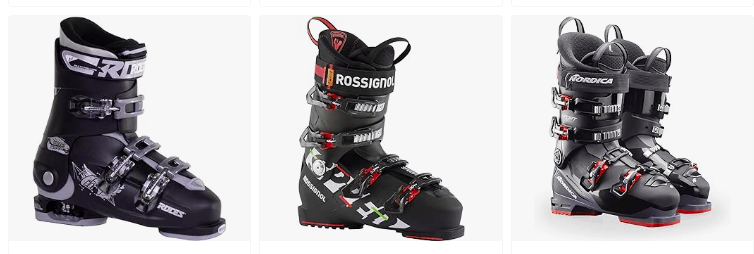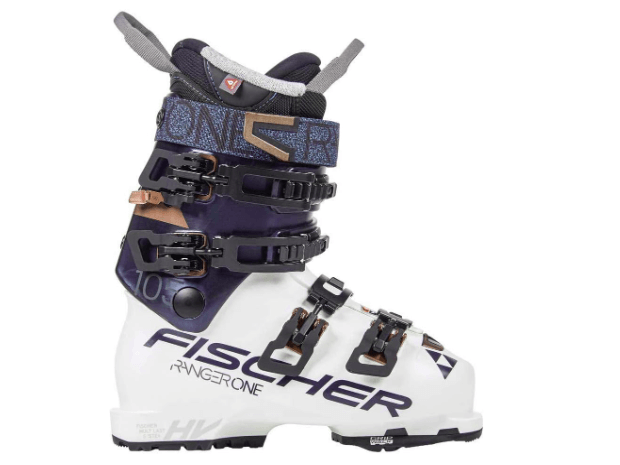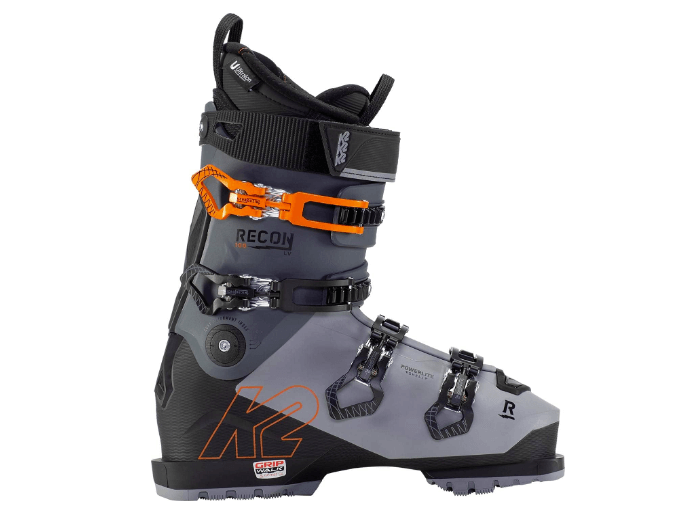
How much is a ski boot?
Ski boots are the unsung heroes of winter sports, connecting a skier to the mountain. These specialised footwear acts as a bridge between the human body and the skis, offering control, stability, and comfort on the slopes.
How much is a ski boot ?
The price of ski boots varies greatly based on various aspects, including the brand, model, features, and location of purchase. Ski boots can cost anywhere from $150 to $1,000 or more on average. Here’s an overview of the various pricing ranges for ski boots:
Beginner Ski Boots:
These are usually intended for novices and may have fewer features. Entry-level ski boots can cost between $150 and $300.
Ski Boots for Intermediate Skiers:
These boots are ideal for intermediate skiers seeking a blend of performance and comfort. Intermediate-level ski boots typically cost between $300 and $500.
Ski Boots for Advanced Skiers:
Advanced-level ski boots are designed for highly experienced skiers who place a premium on performance. They frequently have more functionality and more exact customization possibilities. Prices might range from $500 and $800 or more.
Ski Boots for Experts and Racers:
Expert-level boots, especially race-specific types, are built for maximum performance and are frequently more expensive. Expert and racing ski boots can cost anywhere from $700 to $1,000 or more.
Customised and specialised ski boots:
Some skiers may want to spend extra money on custom-fitted ski boots. These boots are frequently fitted to the skier’s foot form and can be much more expensive than off-the-shelf alternatives.
It’s crucial to remember that you may need to budget for extra charges, such as bespoke insoles or boot fitting services, to ensure your boots fit precisely. Furthermore, pricing might differ depending on where you buy the boots; purchasing from a specialist ski shop with skilled boot fitting services may cost more than shopping online.
Consider your skiing expertise, the sort of skiing you want to undertake, and your own preferences when spending for ski boots. It’s crucial to invest in the correct boots that give a comfortable and secure fit since they’ll make or break your skiing experience.
How much do ski boots weigh?
The weight of ski boots can vary depending on their size, type, and brand. On average, a single ski boot can weigh anywhere from 3 to 5 pounds (1.36 to 2.27 kilograms). Keep in mind that this is just an approximate range, and the actual weight of ski boots may differ. Additionally, ski boots designed for specific purposes, such as racing or touring, may have different weights. To find the exact weight of a particular pair of ski boots, it’s best to check the manufacturer’s specifications or product descriptions, either on their official website or through retailers.
How to choose the best Ski boots Guide

Ski boots are important components of the skiing experience, impacting a skier’s performance, manoeuvrability, and safety. In this article, we will dig into the world of ski boots, investigating their numerous varieties, characteristics, and the critical factors to consider when selecting the best pair to fit your skiing style and needs. Understanding ski boots is the first step towards improving your mountain abilities, whether you’re a seasoned pro or a newbie doing your first turns.
The proper ski boot is essential for both comfort and performance on the slopes. Here’s a detailed guide to help you choose the best ski boot:
Determine Your Level of Competence:
Think about your skiing abilities. Do you consider yourself a beginning, moderate, or experienced skier? The sort of ski boot you require will be determined by your ability level.
Understand Your Skiing Style:
Different skiing methods (alpine, freestyle, backcountry, etc.) may necessitate the use of different boot attributes. Alpine skiing boots, for example, are made for groomed lines, whereas backcountry boots are made for off-piste experiences.
Get the Right Size:
Ski boots should be snug but not too tight. They should fit like a tight handshake, with no pressure spots.
Consider your weight and skiing skill as well as your foot size. Most manufactures provide ski boot size charts.
Remember that ski boot sizes are frequently different from conventional shoe sizes, so don’t assume that your regular shoe size will fit ski boots.
Understand Boot Flex:
The stiffness of the boot is referred to as ski boot flex. A greater flex number suggests a stiffer boot, which is often appropriate for intermediate skiers, whereas a lower flex number is appropriate for novices.
A flex grade of 60-70 is appropriate for beginners, 80-90 for intermediates, and 100+ for experienced skiers; a flex rating of 100+ is appropriate for advanced skiers.
Consider Boot Last:
The last width of a ski boot refers to its width across the forefoot. Ski boots come in various last widths, such as narrow (97mm-98mm), medium (100mm-102mm), and wide (103mm+).
Choose a boot with a last width that matches the shape of your foot. Wider feet require wider last boots for comfort.
Determine the Shape of Your Foot:
Different boots are made to fit specific foot shapes. Some companies provide versions for narrow, medium, and broad foot shapes.
Look for businesses who specialise in boots for your foot shape if you have very narrow or broad feet.
Seek Professional Help:
Visit a reputable ski store with competent personnel who can measure your feet, evaluate your skiing aptitude, and propose boots that are right for you.
bespoke alterations, such as heat moulding and bespoke insoles, can be made by boot fitting professionals to ensure an exact fit.
Try On Several Boots:
Try on several pairs of boots to evaluate fit, comfort, and features. Spend some time in the boots to look for any pain or pressure places.
Bring your skiing socks and any orthotic inserts you use to simulate the real thing.
Consider Boot Liners:
Custom moldable lining in certain boots can improve fit and comfort. Liners may be heat-molded to fit your specific foot shape.
Remember that you may replace worn-out liners to extend the life of your boots.
Don’t Make a Hasty Decision:
Take your time so that you may make an educated conclusion. Ski boots are an investment that will last a lifetime, and comfort and fit are essential for a wonderful skiing experience.
Remember Socks:
To pair with your boots, choose moisture-wicking and comfy ski socks. Socks play an important part in overall comfort.
Consider Trying on Various Brands:
Each brand’s fit and feel may differ somewhat. Don’t be hesitant to try out different brands to find the one that’s right for you.
Finally, choosing the appropriate ski boot is a personal preference, and your comfort and success on the slopes are dependent on getting the fit right. Seek professional advice and try on a variety of ski boots to determine the best fit for your skiing demands and foot shape.
FAQs About Ski Boots
What is the function of ski boots?
Ski boots are designed to offer skiers with support, control, and comfort while conveying their actions to the ski bindings and, eventually, the skis. They are critical to skiing performance and safety.
How can I determine the proper size for ski boots?
Ski boot size differs from conventional shoe sizing. It is best to have your foot measured at a professional ski store. The boot size should be snug but not unduly tight. The size varies depending on the brand and model, therefore follow the sizing instructions for the exact boot you want.
What do the numbers on the flex rating of a ski boot mean?
The stiffness of the boot is represented by the flex rating. Higher numbers imply a stiffer boot that is appropriate for expert skiers. For beginners and intermediates, lower numbers are preferable. Flex ratings typically vary between 60 (soft) to 130+ (extremely rigid).
How can I tell whether a ski boot is the proper size for me?
When you flex your knee forward, your toes should lightly contact the front of the ski boot, and it should feel snug but not uncomfortable. Your heel should be secure and lifted only slightly. A boot fitter may evaluate the fit and make changes as needed.
What is the difference between male and female ski boots?
To better accommodate the female body, women’s ski boots have a lower calf and a thinner heel. They are also often lighter. However, there are several unisex or gender-neutral choices.
Can I heat mould ski boot liners to make them fit better?
Many modern ski boots include heat-moldable lining that a competent boot fitter may customise to your foot shape. This has the potential to greatly increase comfort and performance.
How often should I buy new ski boots?
Ski boots have a variable lifespan, although it is customary to replace them every 100-150 days of skiing or every 5-7 years, depending on activity and boot condition.
Can I use my ski boots for snowboarding or vice versa?
Due to variations in the binding systems and motions connected with each activity, ski boots and snowboarding boots are not interchangeable. It is essential to wear the proper footwear for each sport.
What do I put on inside my ski boots?
To keep your feet dry and comfy, use moisture-wicking, breathable ski socks. Wearing many pairs of socks can lead to pressure spots and discomfort.
How should I break in my new ski boots?
Ski boots are often broken in by skiing in them for brief amounts of time. However, a solid initial fit is critical, as substantial boot alterations are not suggested for most skiers.
Are ski boots available for those with large feet or specific foot conditions?
Yes, ski boots for those with broad feet or specific foot issues are available. For bespoke solutions, look for models with a wider last width or see a boot fitter.
Related
11 Best Ski Destinations To Visit In Europe With Family or as couples.
What Are The Best Ski Resort In New Mexico? When Do They open?







